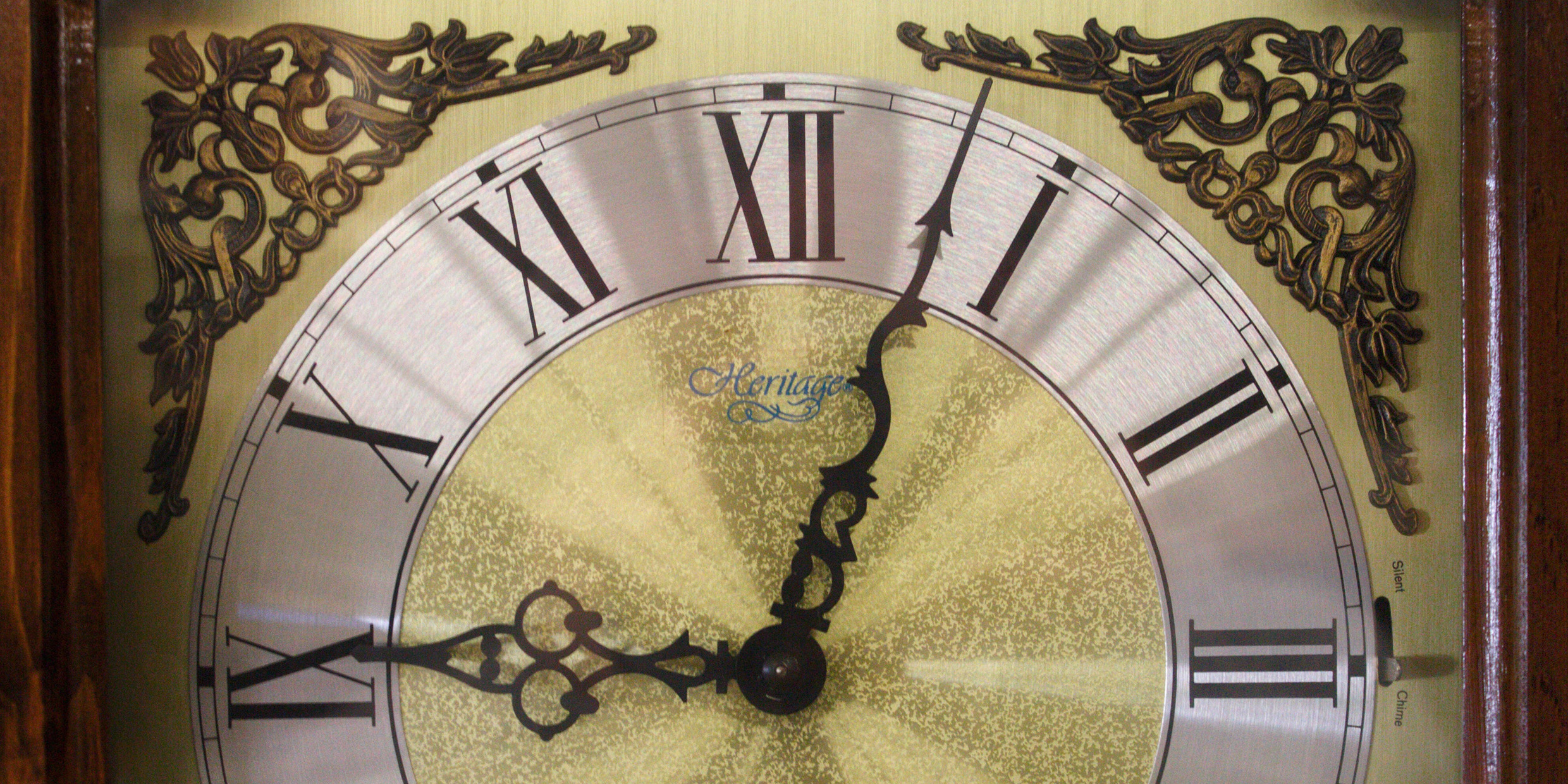Originally published 27 November 2001
Neurologist Antonio Damasio suggests in his book Descartes’ Error that the great French philosopher got it backwards: Not “I think, therefore I am,” but rather “I am, therefore I think.”
Without a brain — those few pounds of red meat atop our spinal columns — thinking is impossible. The mind, and therefore the self, is inextricably embedded in our physical bodies.
But a newborn brain is not yet a self, at least not much of one. A self is also a lifetime of remembered experiences, somehow woven into hundreds of billions of cranial neurons like a picture into a cloth tapestry.
I visited my 88-year-old mother recently in Chattanooga. At one point in our visit, she entertained me with a song she had learned more than 80 years ago, “My Grandfather’s Clock.” Some readers will know it:
My grandfather’s clock was too tall for the shelf, so it stood ninety years on the floor…
As my mother called up the words of the song out of the distant past, I marveled that they still existed inside her brain, along with countless other shared memories that she recalls more vividly than I do. What a thing is human memory! No library can touch it for speed of recall. No computer memory can equal it for volume.
It was bought on the morn of the day he was born and was always his treasure and pride…
The words came tumbling out. How? How can that song possibly still be in there, intact, able to be extracted and sung without erasing? I could tell that she was proud to remember the song, as well she should be. The song is part of who she is, a brick in the mansion of her self.
The 2000 Nobel Prize in medicine went to Eric Kandel, Paul Greengard, and Arvid Carlsson for studies on the physiology of memory. In his address to the Nobel Foundation, Kandel recounted his own journey into the mansions of self.
He first became interested in the study of memory in 1950 as a result of his readings in psychoanalysis as an undergraduate at Harvard. Later, as a medical student, he began to find psychoanalysis limiting; it treated the brain as a black box, observable only from outside. Kandel wanted to open the box, to see what was inside — to explore the mansion of memory as flesh and blood.
He was convinced that memory was biological and that human memory might have much in common with memory in other organisms. His approach, therefore, would be reductionistic: Start with the rudiments of memory in a simple organism, with the hope of eventually understanding the apparent miracle of human memory.
Kandel took the sea slug Aplysia as his model. This fist-sized, shell-less, aquatic snail has several advantages as an experimental animal: It has only 20,000 central nerve cells, rather than the tens of billions in mammalian brains, and the cells are big, ten times bigger than human neurons. And Aplysia can be trained to respond to stimuli. It learns and remembers.
When a sea slug remembers, changes happen at the places where nerve cells touch each other, the synapses. Kandel, and others, worked out the biochemistry of these changes, for both short-term and long-term memory, and they showed that the cellular and molecular changes at work in Aplysia’s rudimentary brain are present in mammals, too.
There may be as many as 100 billion nerve cells in the human brain, and each one is connected to thousands of others. Memories are stored as electrical and chemical changes at the synapses where cell communicates with cell. A scribble. A lifetime of experiences scribbled into flesh.
Ninety years without slumbering, tick tock tick tock. His life seconds numbering, tick tock tick tock…
The biochemical approach to understanding memory has been wonderfully successful, but it is a long way from a sea slug to an 88-year-old human who can remember the words of a song learned more than eight decades ago. And not just a song. People, faces, voices, places, literature, music, telephone numbers, travels, likes, dislikes, loves, hurts, grandparents, grandchildren, birthdays, funerals, current affairs, and the grand pageant of human history — a vast and unique accumulation of memories, profound and trivial, which are a human self.
As Kandel pointed out in his Nobel address, there is lots more yet to learn, and full understanding will require the combined efforts of molecular biologists, cognitive psychologists, neurologists, psychiatrists, and perhaps even computer modelers. The 21st century promises to be the century when we explore every corner of the mansions of self, and understand, at least in principle, how the brain gives rise to mind.
The sea slug Aplysia has confirmed that Descartes was wrong; The human self is not a dualism of mind and matter, but rather an efflorescence of self from matter—tick tock tick tock—a shimmering exuberance of the stuff of the universe gathered in the human brain into biochemical webs of astonishing complexity.



